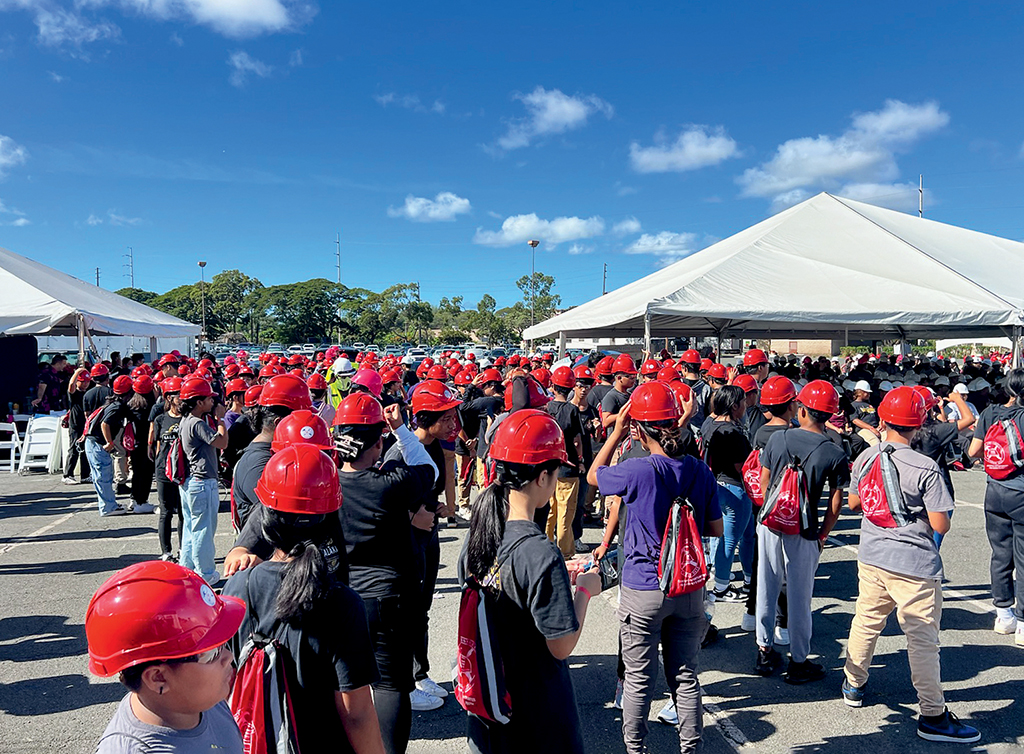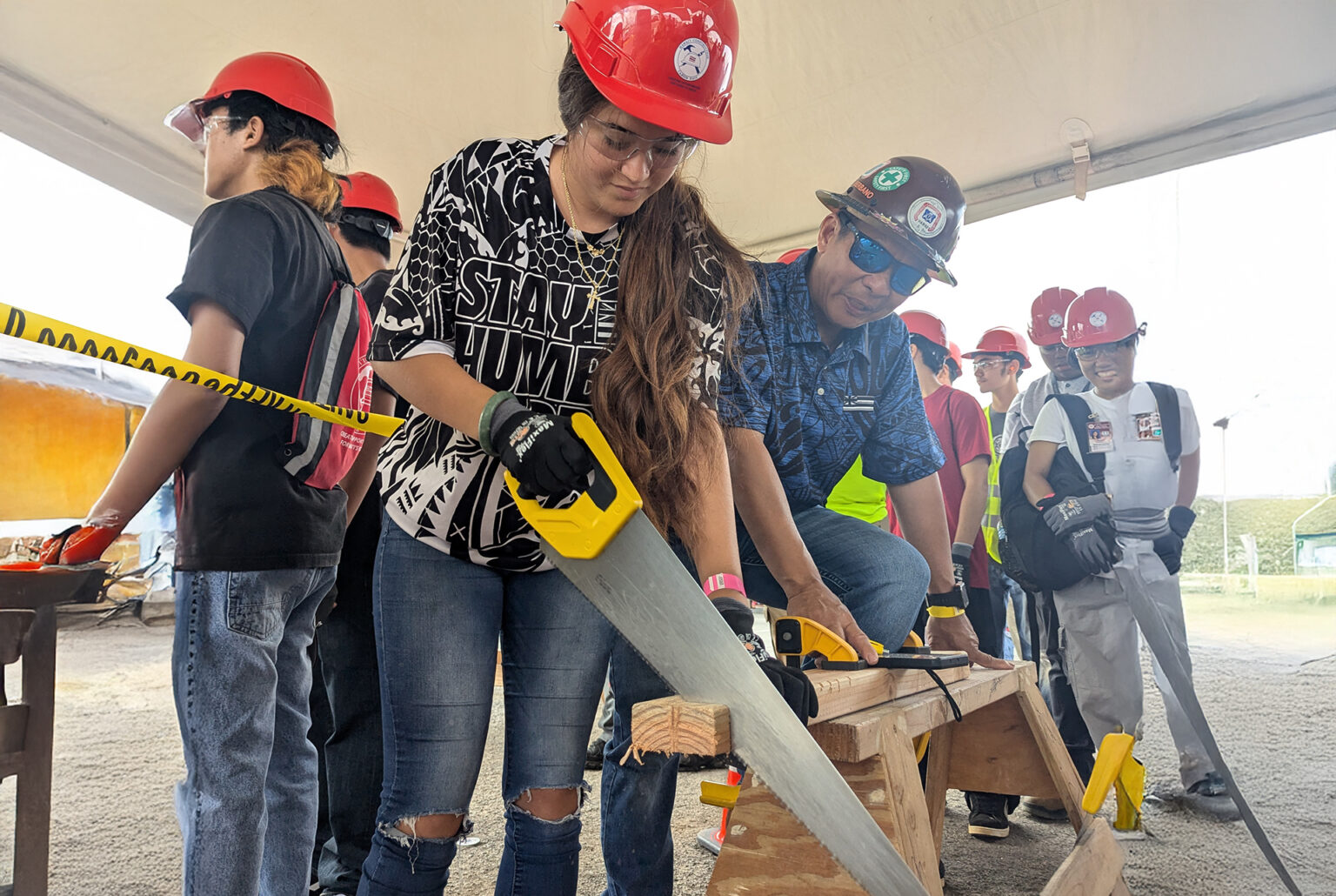There are two conflicting trends in Hawai‘i construction today that threaten the industry’s progress.
On one hand, Building Industry Hawaii’s Top 25 Contractors reported unprecedented revenue growth in 2023. The outlook for 2024 and beyond remains strong, with major projects like the Pearl Harbor Dry Dock Replacement, Ho‘opili and rebuilding of Lāhainā fueling further growth, while ongoing development continues across West O‘ahu, Kaka‘ako, Waikoloa and other regions.
On the other hand, a labor shortage affecting nearly all industries, including construction, is slowing progress. Several factors have contributed, but the key issue is that there are more jobs than workers. Current projects have slowed or stalled because of this shortage, and to move forward could mean workers will have to be recruited from beyond Hawai‘i’s shores.
These opposing forces are concerning to economists, industry leaders and governments, as well as the workers and unions most directly impacted.
The Pacific Resource Partnership (PRP), which represents the Hawaii Regional Council of Carpenters, sees reasons for concern, but is actively working to stem the loss of momentum.
[Editor’s Note: Building Industry Hawaii contacted multiple construction unions and trade organizations across the state. None agreed to participate in this story.]


THE COMING WAVE
PRP Interim Executive Director Josh Magno highlights the threat of what he calls the “silver tsunami,” where a generation of skilled workers are nearing retirement age. He predicts a rapid loss of workers in the not-too-distant future.
“The average age of the construction workforce in Hawai‘i is the sixth highest in the country at 42 years of age,” he says.
While workers continue to leave the industry, PRP is actively working to recruit new talent to fill the gap.
“With Hawai‘i’s construction industry forecasted to generate over $10 billion worth of work over the next three to four years, [PRP] has invested a lot of energy into opening people’s eyes about the possibilities of a rewarding career in the trades,” Magno says. “In fact, our analysis of the projected growth in construction put in place in Hawai‘i predicts a need for 10 percent growth in new construction workers every year for the next several years.”

ALL HANDS ON DECK
The increased demand for workers and its effects on the economy has called for an “all hands” approach to confront the issue on multiple fronts. One focus is showcasing the benefits of entering the construction field.
“We are working collaboratively with all facets of the construction industry, local government and educational institutions to extol the benefits of the trades, which allows a young person, including women, to earn as they learn with no college debt,” says Magno. “The possibility of earning a six-figure salary once a person completes their training in a trade, for example becoming a journey-level carpenter, is extremely exciting.
“We are working very hard to transfer this excitement to Hawai‘i’s younger generations and those who are looking for a career change,” he says.
PRP is also reaching out to minority groups and underrepresented communities through initiatives like the Sisters in the Brotherhood program, which supports women in trades, and Helmets to Hardhats, which helps military veterans transition into construction careers.
Additionally, PRP is working with elected officials to help support labor and apprenticeship programs.

APPRENTICESHIP POWER
Apprenticeships are a well-established way to attract new workers, offering hands-on training while earning a wage. This approach has long been embraced by the construction trades and unions.
According to data from the U.S. Department of Labor, in fiscal year 2023 there were nearly 220,000 active apprentices in the construction industry nationwide, almost double the number in 2014.
In Hawai‘i, there were 5,119 active apprentices during the same period, an 11.7 percent increase from 10 years ago. To meet ongoing demand, unions are expanding recruitment efforts.
“To navigate the need for new tradespeople, the Hawaii Carpenters Apprenticeship and Training Fund (HCATF), led by Edmund Aczon, has shifted to year-round recruitment, moving away from the traditional twice-a-year schedule in April and September,” says Magno. “This change … aims to fill immediate labor needs more efficiently.
“Pacific Resource Partnership is supporting these recruitment efforts as much as possible. In fact, from 2019 through April 2024, more than 2,200 apprentices have entered the carpentry trade in Hawai‘i,” he says.
SEEDING THE NEXT GENERATION
In addition to HCATF’s apprenticeship program, events like Hawaii Construction Career Days help spark interest in the industry.
Held annually across the country, with local events on O‘ahu and Kaua‘i, these events give students a chance to learn about construction from contractors, engineers and trade professionals. Students receive invaluable hands-on experience with heavy construction equipment and gear, and can speak with skilled trades professionals who’ve been right where they are now.
PRP participated in the Hawaii Construction Career Days event at Aloha Stadium on Sept. 19 and Sept. 20. With around 1,400 students attending on O‘ahu alone this year, events like this are perhaps one of the best ways for unions to not only attract, but also grow the next generation of Hawai‘i’s construction workforce, potentially offsetting the impending “silver tsunami.”




